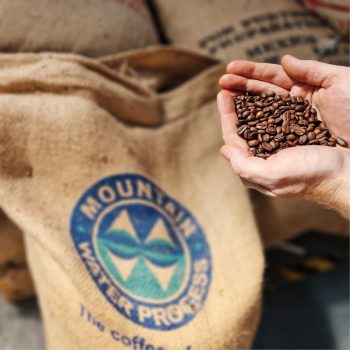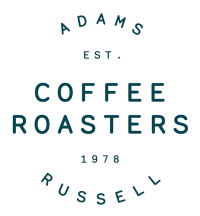
It’s dull. It’s pointless. It tastes funny, smells funny. To the dedicated and the hardcore, the idea of drinking decaf is sacrilege. When you think of decaf you think of an espresso that’s pale, insipid or something vaguely resembling the taste you’re used to. It’s the ‘what could’ve been’ – flat and lifeless both in the cup and the mouth. As an ex-barista these are all ways I’ve heard decaf coffee described as time and time again.
It’s safe to say that decaf is held in poor regard. But is it a case of being snobby, or do we just not know enough about it? This article will highlight the positives of decaf and act as a step-by-step guide towards learning to love it. Or at the very least, become more friendly towards it.
What is decaf coffee? The decaffeinating process explained:
To decaffeinate coffee beans is to conduct a rather lengthy, scientific set of processes- of which there are 4 main ones, some of which are solvent based, some without. Before we look at each individual process, let’s briefly look at what they have in common.
- Coffee is always decaffeinated in its unroasted, green state
- Coffee beans contain almost 1000 chemicals, most of which are important to the taste and aroma. The greatest challenge during decaffeination is retaining these important chemicals whilst removing the caffeine
- Water is used in all forms of decaffeination processes (caffeine is a water-soluble substance)
- Water alone is insufficient; it would create a dull and washed-out taste. It’s often paired with other agents such as Co2, activated charcoal, methylene chloride or ethyl acetate
1. Indirect-Solvent Process
The coffee beans are soaked in hot water for several hours, extracting the caffeine from the beans. The beans are then removed from the water. Methylene chloride or ethyl acetate is added to the water, these chemicals bond to the caffeine molecules and are eventually evaporated, leaving behind the flavours and oils. The beans are then re-introduced to the water so these flavours and oils can be soaked back up.
2. Direct-Solvent Process
A much simpler process which involves steaming the beans for approximately 30 minutes to open up their pores. This allows the chemicals to penetrate the surface. They are then washed for up to 10 hours in either methylene chloride or ethyl acetate to remove the caffeine. They are then re-steamed to remove any chemical residue.
3. Swiss / Mountain Water Process
One of the only significant differences between these two processes is where they take place. Mountain Water processing takes place in Mexico, while the Swiss Water Process takes place in a single facility near Vancouver, British Colombia.
The beans are soaked in hot water to extract the caffeine. The water is then put through an activated charcoal filter, caffeine molecules are trapped in the filter as they are larger whilst other sugars, flavour molecules and oils are able to pass through and be retained- creating a compound known as Green Coffee Extract. This extract-infused water is then used to soak the next batch of green beans, since this extract already contains all of the flavour compounds we want to keep, these substances won’t be dissolved and just the caffeine is removed.
Both on paper and in practice this sounds like a complicated and lengthy process, but it yields a product that is big on flavour and free of any chemical compounds.
4. Carbon Dioxide Process
The green beans are soaked in a large tank of water for 10 hours. To draw out the caffeine molecules, pressurised carbon dioxide is added- extracting the caffeine from the beans. The gas is then transferred to another tank where the caffeine is removed. This can then be reused for the next batch.
Both the Swiss and Mountain Water processes are considered to be organic as no artificial chemicals are involved. In some cases, processes involving ethyl acetate (if originating from natural sources) can also be considered organic. However other factors such as handling practices, packaging, roasting and other processing methods all impact a product’s organic status. To find out exactly how to get this certification and why organic coffee is considered better for both your health and the environment, take a look at our “Is Organic Coffee Better?” article.
Choosing the most suitable product: Decaf beans or ground?
Of course, most of us drink coffee as it is a well-loved stimulant. When drunk of a morning, it’s probably the sole reason we get anything done. Of an afternoon, it acts as a much-needed oomph to get us through the rest of the day. However, there’s much more to coffee than the caffeine content. Drinking decaf is a good way or experiencing a cup of coffee without the caffeine kick. Plus, not everyone has a positive experience with caffeine. If we’re sure of one thing, it’s that for whatever reason you find yourself drinking decaf- you don’t have to sacrifice on flavour when choosing your favourite brew.
Our Decaffeinated Mexican is grown in South Mexico and is balanced and consistent in taste. The Mountain Water process is 100% solvent chemical free and removes up to 99% of the caffeine, it’s the perfect foundation for all coffee shop favourites, without compromising on taste or quality. Expect sweet, smooth notes of caramel, vanilla and nut.
Decaf Beans- If you’ve got an espresso machine on your kitchen counter- these are the perfect option, otherwise they can be freshly ground for filter or other home brewing methods.
Decaf Ground- Perfect if you don’t have the means (or time) to grind your own and suitable for cafetiere, v60 or aeropress. Take a look at our brew guides for ratios and other handy tips.
Decaf Filter- Filter is a great way of creating high quality and consistent coffee in larger batches- great for business owners
Tips for Preparing Decaf Coffee
So, we’ve established that decaf coffee has a bad reputation in the Speciality Coffee industry. Or rather sadly, just in general. We think that decaf coffee can be just as enjoyable (if not more so) than regular coffee. As with any beans (caffeinated or not) the flavour and quality in the cup depends on how the coffee is harvested, processed, roasted and then brewed. Important considerations:
- The supplier. We recommend you always buy directly from a trusted, local roaster who sells high quality and well sourced products. If the coffee is poor at this point, we’re sorry to say that no matter your skill at preparing it, it will remain poor.
- Freshness. Both from the roastery and when you prepare it at home. Grinding your own beans is the best way to achieve guaranteed freshness. Decaf or not, investing in a grinder will seriously improve the quality of your cup.
- Practice the basics. When brewing, ensure you’re using fresh water (filtered if possible) and clean equipment.
- Experiment. It’s exciting to look at different brew methods and see how each one can help nuanced flavours to develop. For example using, a stove top will achieve a rich, deep flavour. Whereas brewing in a V60 results in a light, bright cup.

